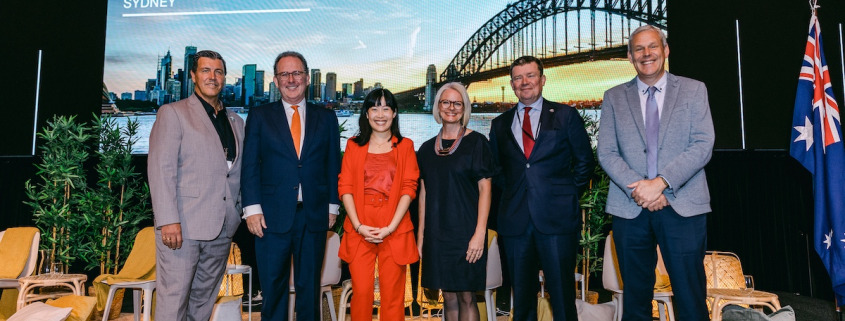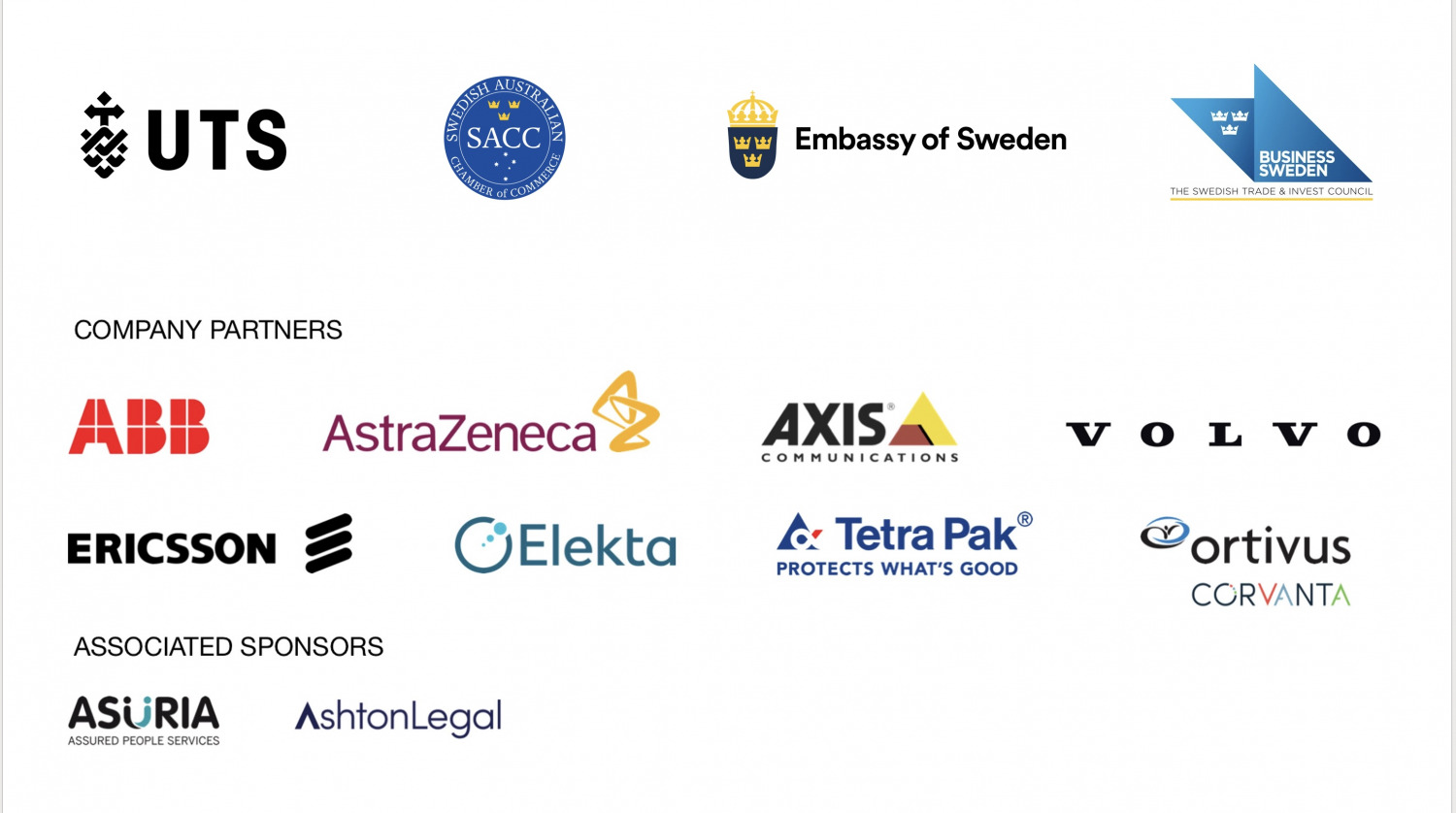Summary – Swedish Australian Innovation, Technology and Design Summit 28-29 September 2022
 Over two days at the end of September, SACC gathered a few hundred academics, students, government representatives as well as business leaders and innovators, representing a large number of industries, for the first of its kind – the Swedish Australian Innovation, Technology and Design Summit.
Over two days at the end of September, SACC gathered a few hundred academics, students, government representatives as well as business leaders and innovators, representing a large number of industries, for the first of its kind – the Swedish Australian Innovation, Technology and Design Summit.
Together with co-host, the University of Technology Sydney, in their stunning Great hall, we held 10 sessions offering in-depth knowledge on a number of engaging topics (see full program here). The event covered many topical focus areas, and the sessions included thought-leadership panellists, who all provided the audience with perspectives that were both informative and educational as well as provocative.
Official dignitaries included The Hon. Alister Henskens, SC MP, New South Wales Minister for Enterprise, Investment and Trade, Minister for Sport, Minister for Skills and Training, and Minister for Science, Innovation and Technology. Guest of Honour was Ambassador of Sweden to Australia, HE Pontus Melander.
The common denominator throughout the entire summit was sustainable innovation, sustainable design and development and how government and different industries are working towards a net zero future.
We learnt that we need to consider the human impact of innovation.
That many businesses and official agencies have the ambition to commence their sustainability journey but they don’t know where to start.
We also learned that we need to shift the business model, with circularity at the core of each process in the business.
We learned that there’s a full shift in business and for example in construction: we used to build things, now we are solving problems.
We learned that for innovations to be affordable – or they won’t be used. And if it is not easy to use – it won’t be used.
We learned that if we want to accelerate the adoption of 5G, we need to own the problem, know the problem and then find out how technology can solve the problem. We need a digital vision and replace old solutions with something smart, not just replace an existing model.
 The carrying theme throughout the sessions was collaboration and how working together across sectors can but also even with traditional competitors to share lessons learned and build broad and viable solutions.
The carrying theme throughout the sessions was collaboration and how working together across sectors can but also even with traditional competitors to share lessons learned and build broad and viable solutions.
During the session on sustainability in fashion, we learned some confronting statistics. 70% of all clothes bought in Australia are deposited into landfill within 12 months after purchase. This number has more than doubled since year 2000, and Australia has the second position in the world of fashion waste per capita in the world, with 15 kilos per capita.
We also learned that we are all part of the solution for a net zero future and that we need to create citizenship around sustainable behaviours.
The manufacturing model is also rapidly adopting to meet more sustainable sourcing of raw materials, or rather, materials to not only recycle but also to reuse and re-manufacture.
We also discussed how our cities will become smarter and in doing so, also become more sustainable and indeed, safer. Utilising data within the whole transport sector already is delivering incremental change, in particular in safety. By enabling different road users to collaboratively, capture and transmit data, vehicles and vulnerable road users like cyclists, delivers robust outcomes and prevent avoidable accidents.
The two days were packed with generous sharing of best practice and absolutely evoked more bilateral as well as local collaboration and new networks.
The SACC is proud to have played an active role in establishing new business connections between Sweden and Australia and supporting knowledge sharing and business opportunities for more than one hundred years. And now also in the area of sustainability.
The Nordic countries have collectively been called “the Silicon Valley of Europe” for innovation, sustainability and green economy. SACC will continue to invite and engage members to explore pathways forward towards a net zero economy and enable trade and knowledge exchange between Australia and Sweden.
Photogaphy by Raquel Pires www.raquelpiresphotography.com
PRESENTING THE INNOVATION SUMMIT PARTNERS CLICK HERE TO READ MORE
For more information contact SACC at sacc@swedishchamber.com.au
Related links:
Europe’s most innovative countries
https://www.weforum.org/videos/europe-s-most-innovative-countries
5 reasons why Swedes are world-leading innovators
https://www.youtube.com/watch?v=umWKUmSYNbA&t=14s&ab_channel=Sweden




